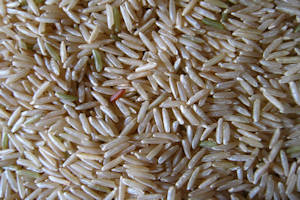Study shows origins of rice cultivation
14 May 2016
Staple food production gives insight into history – and feeding future populations

Rice – the staple food source of around 50% of the World’s population – has been domesticated on three separate occasions, according to a new study by University scientists.
The work could be used to educate better rice grain improvement projects, something that may prove crucial with growing environmental concerns.
The study focused on three major types of rice: the long-grain Indica, which is non-sticky and mainly found in tropical lowland Asia; Japonica, a short-grain rice that produces sticky rice, like the one in sushi; and Aus, the drought-tolerant variety that grows in Bangladesh.
Before this study, researchers had thought rice may have been domesticated once or perhaps twice. Scientists had looked at Japonica and Indica because they have had the longest history of cultivation. Some argue that Japonica came first around 10,000 years ago and that Indica emerged as a hybrid form of it a little later. Others contend that both Japonica and Indica have separate domestication events.
However, new analysis from Professor Terry Brown, Dr Peter Civan and colleagues add a third domestication event to the mix by showing evidence that Aus was also domesticated separately in a region from India to Bangladesh.
But why the big deal about rice? Well rice is thought to have brought about the great civilisations in Asia and led the way for large-scale agriculture to take place. Rice acted as a reliable food source and so large numbers of humans could gather to form large villages and settlements. Understanding how rice was domesticated would allow scientists to get a better understanding of how civilisations grew and moved across Asia.
Professor Brown concludes: “Our conclusions are in accord with archaeological evidence that suggests widespread origins of rice cultivation. We therefore anticipate that our results will stimulate a more productive collaboration between genetic and archaeological studies of rice domestication.”
